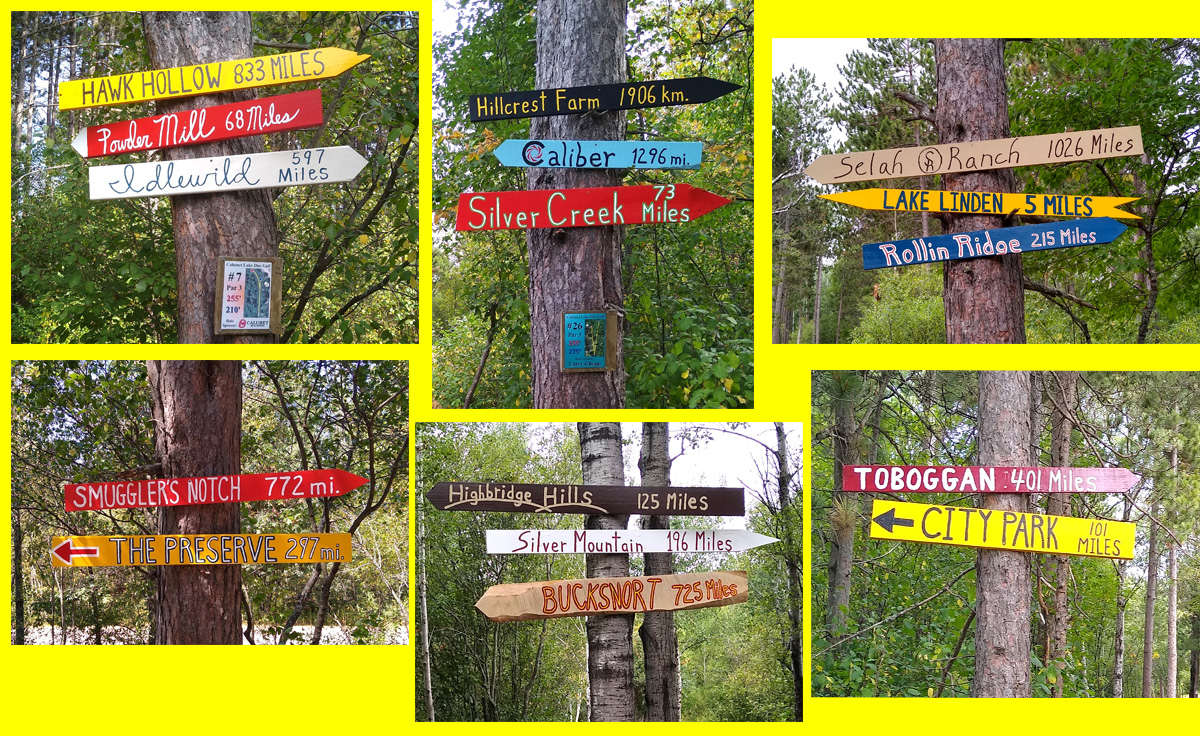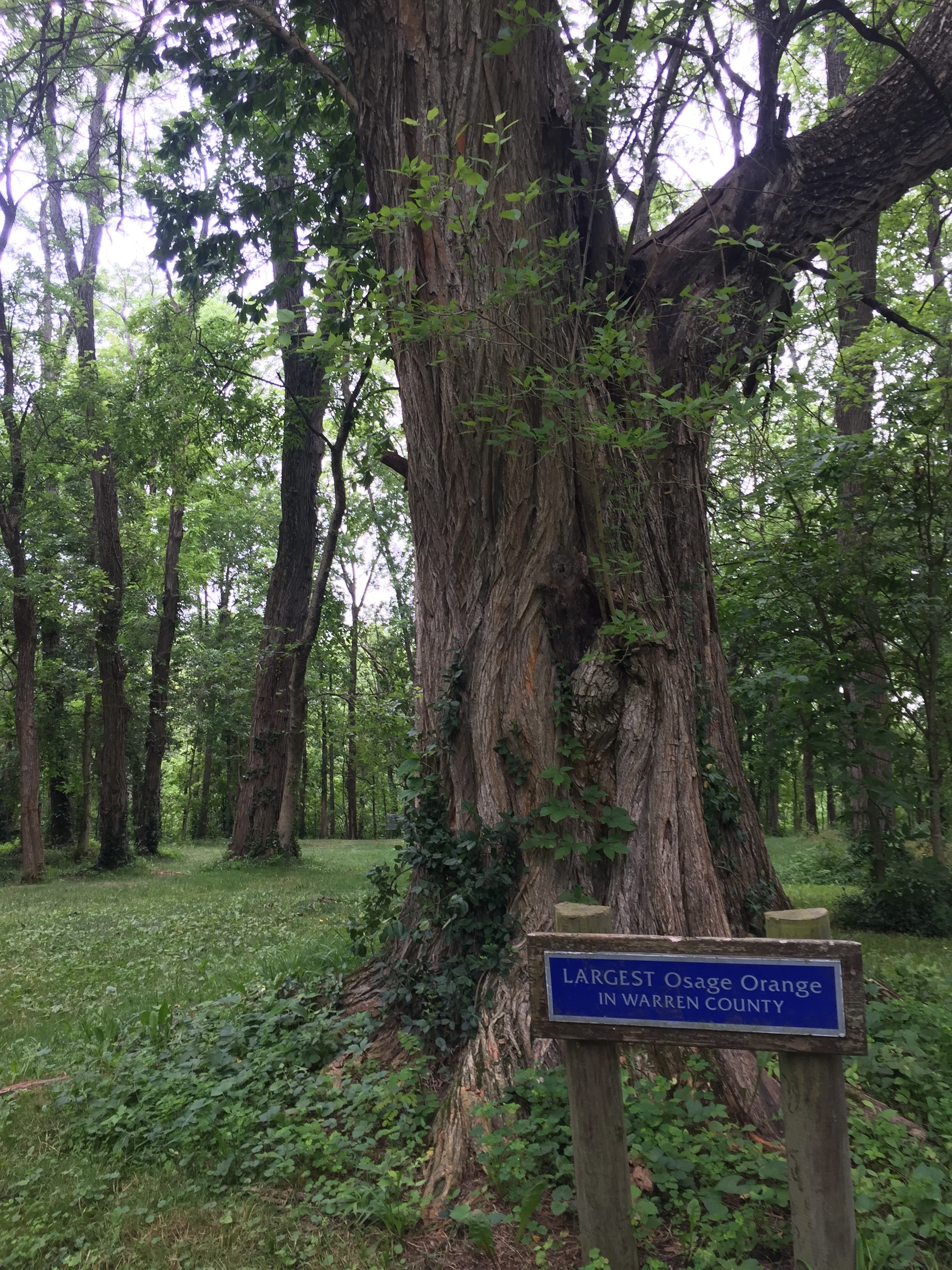Ran into this guy* at Echo Valley, an excellent & newly permanent course found between Dayton and Cincinnati, OH. He resides near (I think) Hole #2's fairway. Course page:
https://www.dgcoursereview.com/course.php?id=12297
*Not sure if it's a guy or gal as I played during the Summer.
Really glad some folks thought it worthwhile to put up a placard because I would've walked by oblivious otherwise. Not being familiar with the Osage Orange, I later looked it up after the round - ah, a Hedge Apple tree! Whether you call it the Osage Orange, Hedge Apple, or Bowwood, read on if you wish to learn more.
Most of us are probably familiar with the tree's large green fruits: they drop like bombs in the Fall, mostly left to rot where they lay because not one of God's creatures thinks they are much good to eat. As a schoolboy, I kicked many a round, rotting green corpse - ka-boom! and a satisfying explosion of Hedge Apple bits showers the sidewalk. Beware the freshly fallen fruits, though - they are not so yielding to a size 6 kick.
The Osage Orange is a decidedly American tree, with its original range restricted to the Red River Valley region of Texas, Oklahoma, and Arkansas. The fruit of the Osage Orange is decidedly unwanted by foraging animals, which makes it an evolutionary curiosity. One theory supposes that the fruits were more attractive/ digestible to the megafauna of a bygone era, making them a modern anachronism.
Native Americans, however, highly prized the hardwood of the tree as a crafting material. The Osage reportedly traveled hundreds of miles to find single trees from which high-quality bows or clubs could be made. John Bradbury, a Scottish traveler, reported in 1810 that the price of a bow made from Osage Orange was a "horse and a blanket," which is about the 1810-era-equivalent of a Pound bag filled with Tour Series Discmania.
While in St. Louis during the staging part of the Corps of Discovery Expedition, Meriwether Lewis sent cuttings of the Osage Orange to President Jefferson. The Smithsonian writes that this was probably the expedition's most significant botanical discovery: "the first shipment of botanical specimens sent to President Jefferson contained the seeds of thousands of miles of fences."
Characterized by tough, gnarly outer bark with scattered thorns set on zigzagging branches, the Osage Orange was used by early settlers as an effective barrier tree, exceeding the hedge plant standard of "horse-high, bull-strong, and pig-tight". Plus it was hardy & easy to grow quickly. Use of the Osage Orange as a hedge plant accelerated in the 1850s through the efforts of John A. Wright, editor of
Prairie Farmer, and Professor Jonathan B. Turner, who believed "God designed Osage Orange especially for the purpose of fencing the prairies." Nearly a hundred years later, the Osage Orange would be one of the primary trees used in FDR's Great Plains Shelterbelt project, one of the federal responses to the Dust Bowl. "To be used in a Hedge" is probably how the Osage Orange originally came to Ohio.
At first, I was worried that some harm might befall The Largest Osage Orange in Warren County, now that his home had become a permanent disc golf fairway. But then, I read this bit in
Our Native Trees and How to Identify Them (one of the most important early books of American botany): "The wood [of the Osage Orange] is practically incorruptible."
Frisbees beware!
Sources:
https://personal.evangel.edu//badgers/Web/Osage/History and Economic Uses.pdf
https://www.smithsonianmag.com/history/osage-oranges-take-a-bough-105043145/?no-ist=
https://archive.org/details/ournativetreesa00keelgoog/page/n304/mode/2up?view=theater







